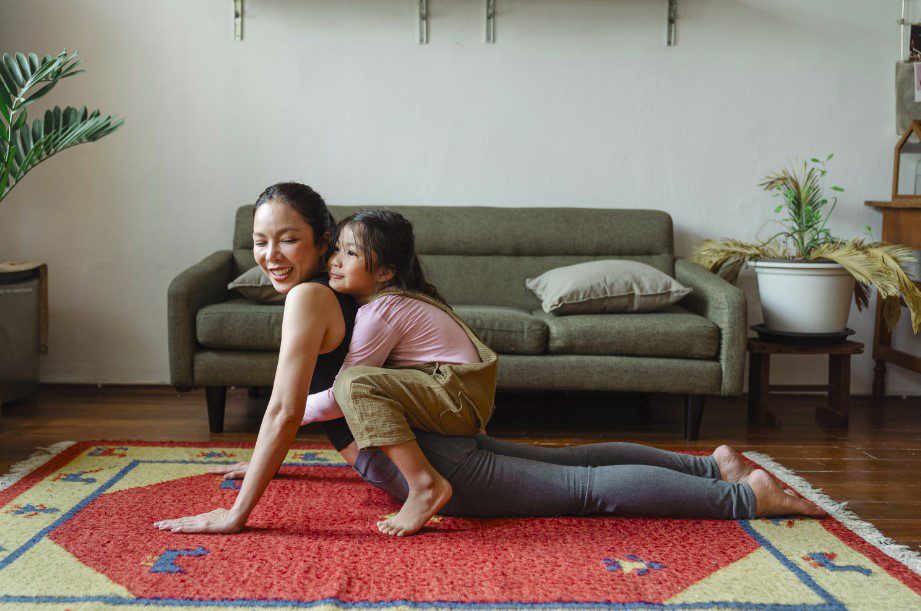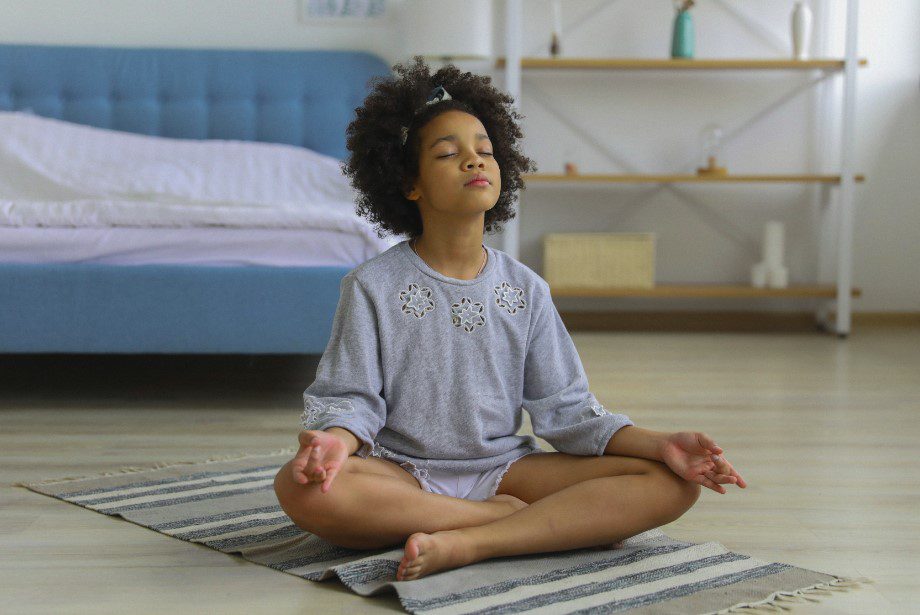In today’s fast-paced world, where technology and responsibilities dominate our attention, the significance of mindfulness and meditation for the well-being of children has reached unprecedented levels. The whirlwind of activities, academic pressures, and digital distractions can the their minds, leaving them stressed, anxious, and disconnected.
As caregivers and educators, it’s our responsibility to equip the younger generation with essential life skills that enable them to navigate life’s challenges with confidence and emotional intelligence.
The practices of mindfulness and meditation can be the ultimate tools of hope, offering children what they need to cultivate resilience, focus, and a deep connection with their inner selves.
In this article, we take a look into the transformative potential of introducing mindfulness and meditation to children. We explore the benefits, strategies, and profound impact these practices can have on their overall well-being.
What is Mindfulness?
Mindfulness is more than a trendy buzzword; it’s a deliberate practice that helps children develop a heightened sense of awareness about their thoughts, emotions, and surroundings.
It refers to the practice of cultivating present-moment awareness and conscious attention to their thoughts, feelings, and surroundings without judgment. It involves teaching children to be fully engaged in the present experience, and foster a sense of focus, curiosity, and self-compassion.
Through mindfulness, children learn to observe their thoughts and emotions as they grow. This allows them to respond to situations with clarity and emotional regulation. This practice encourages children to develop a deeper understanding of themselves, their emotions, and interactions with the world around them.
… benefits for Children:
The benefits of mindfulness for children are both immediate and far-reaching. By engaging in regular mindfulness practices, kids learn to manage their emotions, enhance their focus, and regulate stress.
Research suggests that mindfulness can lead to improvements in self-esteem, reduced anxiety, and increased emotional intelligence. Furthermore, children who practice mindfulness tend to have better impulse control and conflict resolution skills, fostering healthier social interactions.
What is Meditation?
Meditation is a deliberate practice that involves training the mind to achieve a state of deep focus and relaxation. Contrary to popular belief, meditation is not solely reserved for adults seeking enlightenment; it holds immense value for children as well.
It is a technique that encourages children to slow down, disconnect from external distractions, and turn their awareness inward.
Through meditation, children learn to observe their thoughts and feelings without attachment, creating a sense of mental clarity and emotional balance. This practice often includes techniques such as deep breathing, visualization, or guided imagery, all aimed at helping children develop a greater sense of self-awareness, emotional resilience, and the ability to manage stress and anxiety.
… benefits for Children:
Meditation equips children with a toolkit to navigate the challenges that life inevitably brings. Through regular meditation sessions, kids develop enhanced emotional regulation skills.
They learn that they have the power to respond, rather than react, to difficult situations. This newfound emotional resilience can lead to improved decision-making, reduced impulsivity, and a greater sense of control over their lives.
Ways to Nurture Mindfulness and Meditation in Children

1. Create a Supportive Environment
To introduce mindfulness and meditation effectively, it’s important to create a supportive and encouraging environment. Children should feel safe to explore these practices without judgment or pressure.
Set up a cozy corner or a dedicated space where children can practice mindfulness. Fill it with cushions, calming decorations, and perhaps soft lighting.
Parents and educators also play a pivotal role in setting the tone. By modeling these practices in your own life, you demonstrate the value and authenticity of mindfulness and meditation.
2. Incorporate Mindfulness into Daily Routine
Infusing mindfulness into a child’s daily routine can be an exciting adventure. Begin with short, age-appropriate activities such as mindful breathing or body scans.
Gradually, expand these practices to include moments of gratitude, sensory awareness, and even mindful eating.
Engaging children’s senses can deepen their connection to the present moment, enhancing their overall experience.
3. Cultivate Meditation as a Habit
Meditation can be introduced as a gentle daily ritual. Find a quiet space where your child can sit comfortably. Start with just a few minutes, gradually increasing the duration as their comfort level grows.
Guided meditation apps or recordings designed for children can make the experience more engaging and relatable. As meditation becomes a habit, children may discover a profound sense of inner peace and mental clarity.
And more …

- Set a Regular Routine: Create a consistent routine for mindfulness or meditation practice. Designate a specific time each day, such as before bedtime or after waking up, to help children associate these practices with relaxation.
- Start with Short Sessions: Make it brief, gradually increasing the duration as their attention span improves. For very young children, even just a few minutes of focused breathing or quiet time can be effective.
- Use Visualization: Guide children through simple visualizations. Let them imagine they’re floating on a cloud or exploring a calm beach. Visualization can make meditation more engaging and relatable.
- Breathing Exercises: Teach children simple breathing exercises, such as the “bunny breath” (in for a count of three, out for a count of three, pretending to sniff like a bunny) or “flower breath” (smell a flower with a deep inhale, blow out a candle with a slow exhale).
- Mindful Walking: Take children outdoors for a mindful walk. Encourage them to notice the sensation of each step, the sounds around them, and the colors they see. This can be a great way to introduce mindfulness in a more active manner.
- Use Props: Incorporate playful props like a glitter jar or a breathing buddy (a stuffed animal placed on their belly to rise and fall with their breath) to make the practice more interactive.
- Guided Stories: Create or find guided meditation stories tailored for children. These stories can lead them on imaginative journeys while encouraging relaxation and mindfulness.
- Make it a Game: Turn mindfulness into a game. For example, play a “mindful listening” game where children close their eyes and try to identify as many sounds as they can, or a “mindful eating” activity where they focus on the taste, texture, and smell of a small treat.
- Encourage Expression: After a meditation session, provide children with the opportunity to draw or talk about their experiences. This can help them process their feelings and thoughts.
- Use Apps and Resources: There are various mindfulness and meditation apps designed specifically for children. These apps often include animations, games, and guided exercises tailored to their age group.
… note
Remember, the key is to keep the practice engaging and age-appropriate. Over time, children can develop valuable skills for managing stress, improving focus, and enhancing their emotional awareness through mindfulness and meditation.
Planting the Seeds of Resilience
In the journey of raising resilient and emotionally intelligent children, mindfulness and meditation stand as pillars of strength. These practices provide children with the tools to navigate life’s challenges with grace and self-assurance.
By embracing mindfulness, children learn to savor the beauty of each moment, while meditation empowers them to tap into their inner reserves of strength. As parents, caregivers, and educators, our collective effort in introducing these practices can shape a brighter, more mindful future for the younger generation.





Leave a Reply